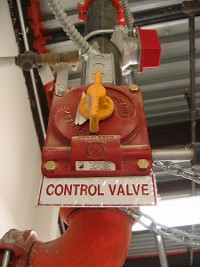A small office can easily keep a fairly close eye on printing: there is probably one person doing procurement, one person maintaining the printers, and, often times, they’re the same person. The budget is unlikely to be so complicated as to obscure printing costs. Everybody knows everybody else, so it’s easy to spread the word about printing waste.
A large organization has none of these luxuries: there will be dozens or even hundreds of different people buying and maintaining printers, and many thousands of people using them. Budgets are often complicated, with printing expenses spread from printers billed as capital equipment, toner and paper as office supplies, support as an IT expense, and electricity as a plant-upkeep expense.
Virebo recommends a three-part strategy for reducing printing in complex organizations. First, measure printing, then optimize the fleet without cutting printing, and finally reduce the print volume.
Step #1: Measure
An old business adage holds that if you can’t measure something, you can’t manage it. The first priority in print reduction is simply to count: count printers, count pages, count supplies, count jobs, count users. You will want to count duplex vs. simplex pages and color vs. black and white pages. You will want to know when parts and supplies are replaced, how quickly they are consumed, and how much you pay for them.
Once you have these data, you can analyze them to answer questions like:
-
How much is my firm spending on printing, both in total and in each department?
-
What departments are the heaviest users of printing? Which ones are the lightest?
-
Is my printer network over-capacity? Do I have more equipment than I need? Or not enough?
-
What printer models are the least expensive, per-page? When I have to buy new ones, which ones should I buy?
-
What does printing look like over time? Is it increasing? Decreasing?
-
Who prints the most? Who prints the least?
-
What do people print?
Answering these questions will let you determine if printing is a high priority (if you already have an efficient network, congratulations!) and monitor it for future changes.
This collection of data will let you evaluate the offerings of managed-print-services vendors, to see how their contracts compare to your current expenses. It will let you fact-check printer vendors, to see if their claims about cost-per-page and cartridge lifetime hold true under your workloads. It will let your audit your print-services vendors, to make sure that your utilization figures match theirs.
Step #2: Optimize
Once you know what’s happening on your printer network, you can cut expenses without reducing printing. How? By eliminating inefficiencies. There are five major areas that every print-user can cut without printing a single page less.
-
Early cartridge replacement. If you know when cartridges are replaced and where printers are, you can find early replacements train users to avoid them—especially on printers that are overly aggressive in lighting their “Toner Low” lamps.
-
Single-sided printing. With a careful survey of all printers, you can track hotspots for single-sided printing. Perhaps some users have their drivers configured to default to single-sided. Perhaps a duplexer is broken. If you find and fix those issues, you can cut paper consumption in half.
-
Inefficient printers. There exists a wide range of per-page costs. A small desktop printer could cost ten times as much per page as a large workgroup model. With information about what prints where, you can find overused, high-cost-per-page printers and redirect their print load elsewhere.
-
Black and white printing on color printers. Color printers are typically much more expensive per-page than black and one models. Perhaps a particular office has only color printers. Perhaps users didn’t know about the expenses. With the right data, you can take steps to eliminate this expense.
-
Idle printers. If a printer isn’t being used, it consumes power without providing any benefit. Unplug it to cut your carbon footprint.
None of these five steps involves printing less. Most of them do not even require end-user involvement: printer procurement, supply replacement, and idle-printer handling are often handled by specialized staff, not by end-users. Taken together, these steps can cut printing costs substantially. At one institution, Virebo calculated that its five-part waste reduction plan could cut monthly paper, supply, and power expenses by over 20 percent.
Step #3: Reduce
The best way to reduce the cost of printing a given page is to avoid printing it at all. But to get users to print less, you need to know what they’re printing and why they’re printing it. No software package can answer the latter question—but the former can be gleaned from print-server logs. Are certain users printing drafts of the same documents over and over? Perhaps they could benefit from training in Word’s Track Changes feature. Are other users printing out reams of PDFs? Perhaps they would be good candidates for an electronic-reader pilot program. Once you know what people are printing and why they print it, you can work to eliminate unnecessary printing.
Virebo is designed around the Measure-Optimize-Reduce strategy. It answers every question and implements every report described above. You can launch Virebo and start collecting data in minutes—it requires no changes to printers or end-user machines. Once it collects enough data, Virebo can recommend how to optimize your fleet and identify areas for print reduction. You can see a demo at our online demonstration site.
To learn more, please contact us or fill out our contact form and a representative will be in touch with you shortly.
During our meeting with the Photizo Group's Misty Hammel we were pleased to discover that both Virebo and the Photizo Group had independently described a 3-part strategy for print-reduction. Photizo calls this technique "Control-Optimize-Enhance," rather than "Measure-Optimize-Reduce," but the goals in each stage are quite similar. Your correspondant heartily endorses both.



